The latest fitness trend, rucking, has made it to Wisconsin. Here's what you need to know
From pickle ball to Peloton, many of today's most popular fitness trends require specialized equipment or traveling to a specific location to participate.
But rucking is different.
All you need for this fitness activity ― which is increasing in popularity thanks in part to social media and the growth of ruck clubs throughout the country including in Wisconsin ― is a backpack, athletic shoes and some weights. Essentially, it's just hiking with a weighted backpack.
Rucking originated as a military training exercise, but its popularity has risen steadily among fitness enthusiasts over about the past five years.
Jennifer Earl-Boehm is the athletic training program director and a professor at the University of Wisconsin-Milwaukee. Earl-Boehm and her graduate students work with UWM's ROTC program to help cadets with their physical training (which includes rucking) and injury prevention. Recently, Earl-Boehm published a study on the physical impacts of rucking.
We spoke with her about the rucking exercise trend, how to get started and how to participate safely. Here's what we learned.
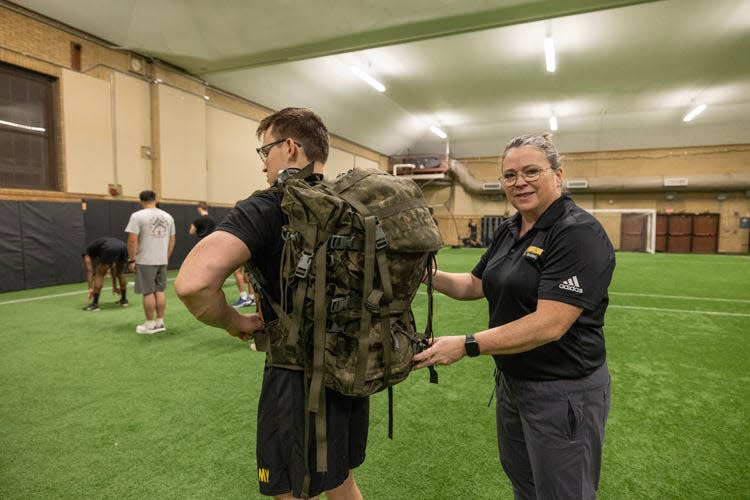
What is rucking?
The word "rucking" originates from the military term for a backpack, which is known as a "rucksack."
Rucking involves walking, often at a quicker pace, while carrying a weighted backpack. Athletes typically carry weight plates (they even make ones specifically for rucking), but you can also fill your pack with books, groceries or other items.
Some athletes start out carrying a load as light as five pounds, and many work up to 35-to-45 pounds, sometimes even more in military training, Earl-Boehm said. Advanced athletes can incorporate more intense movements, like pushups and lunges, into their rucks.
Ruck mileage varies greatly among athletes as well. ROTC cadets begin rucking at about four miles and work up to 12 miles at a 15 minutes-per-mile pace, Earl-Boehm said. But, of course, rucking is no longer just for those training for military careers.
Rucking, she said, can be great for people who "might not want to participate in running for whatever reason" but want to do a "bit more of an intense workout than just walking." By increasing your speed or weights, you can make the workout more challenging, she said.
More: St. Norbert ROTC students marching 140 miles to spread awareness and raise money for vets
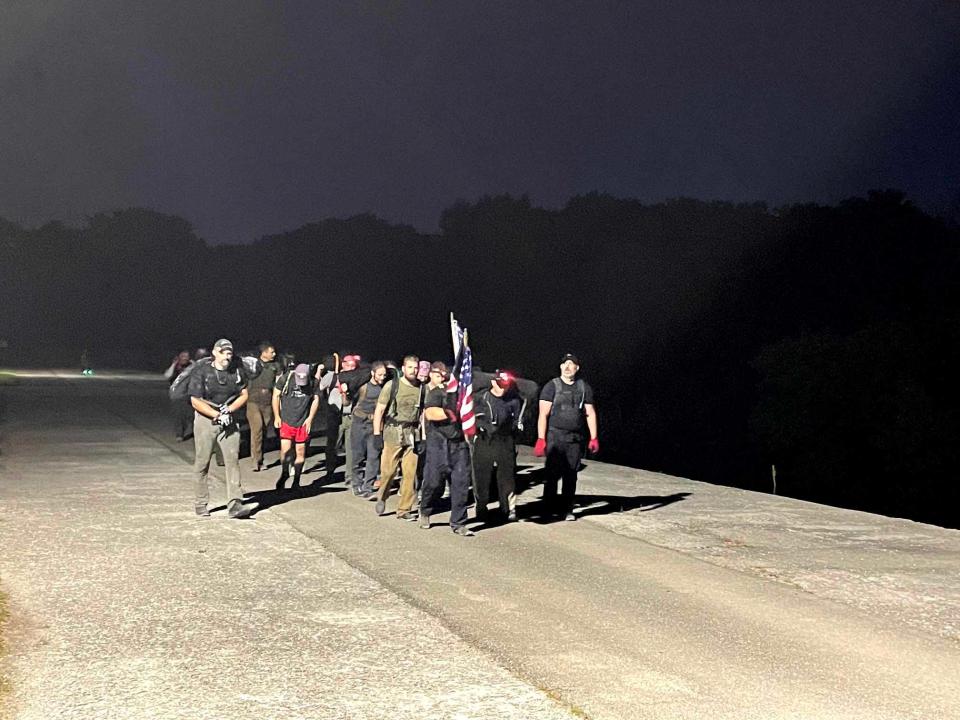
How much weight is considered rucking?
Earl-Boehm said the most important way to prevent injuries while rucking is to build up slowly when it comes to all factors ― weight, speed and distance.
She recommends new ruckers start by carrying a light weight, like five pounds. As athletes continue with rucking, she advises they build up slowly, adding no more than five-to-10 pounds to their pack per week. Most athletes will never need to go above 35-to-40 pounds, Earl-Boehm said.
In an interview with the New York Times, founder of Mountain Tactical Institute Rob Shaul said those who are accustomed to walking for exercise should start rucking "for 30 minutes over even ground at a brisk pace two to three days a week."
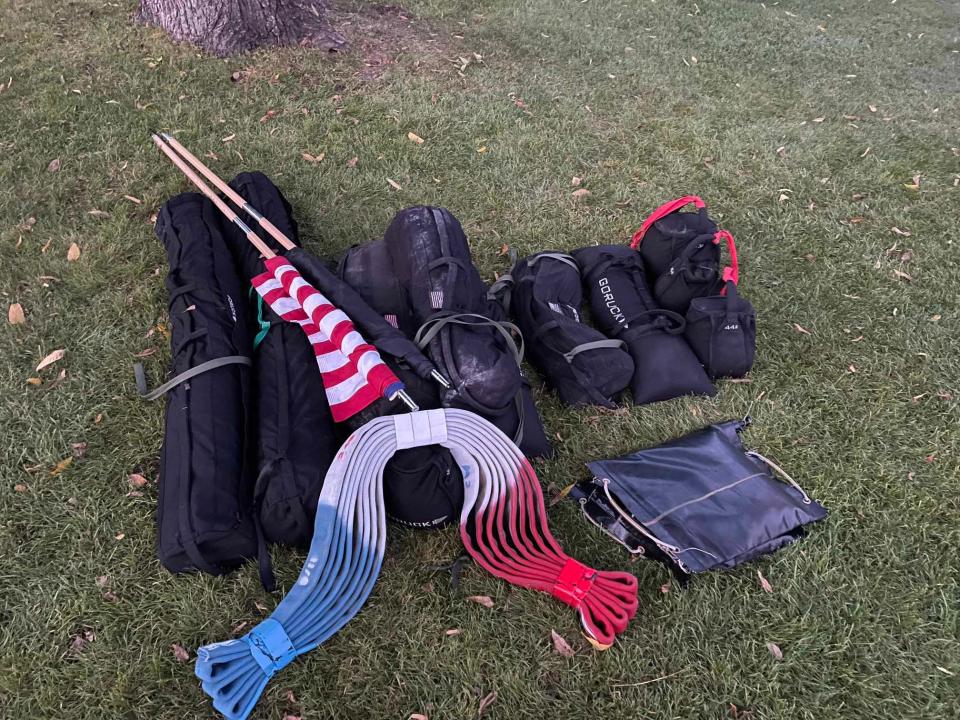
What equipment do I need to start rucking?
In addition to a backpack and some weights, Earl-Boehm said it's important that ruckers wear proper shoes in order to avoid injury.
She urges athletes to use shoes designed for walking, not running, because the different designs account for the fact that your feet hit the ground differently when walking versus running. If you'll be rucking on trails or other more rugged surfaces, Earl-Boehm advises you purchase trail walking shoes for extra traction and grip.
What does rucking do to your body?
Earl-Boehm's research found that rucking can lead to overuse injuries and muscle fatigue, especially in the ankle musculature. She recommends that ruckers "really focus" on ankle strengthening exercises. Working on ankle strength prevents injury by increasing athletes' endurance. That way, their ankles don't fatigue as quickly on long rucks, she said.
Additionally, Earl-Boehm said people who've had back injuries should be cautious when taking up rucking.
If you have a history of back injuries, she said you should make sure you have "good, adequate core strength" in order to support carrying the rucksack. You can also start with an empty rucksack and add weight slowly over time so your body can adapt, she suggested.
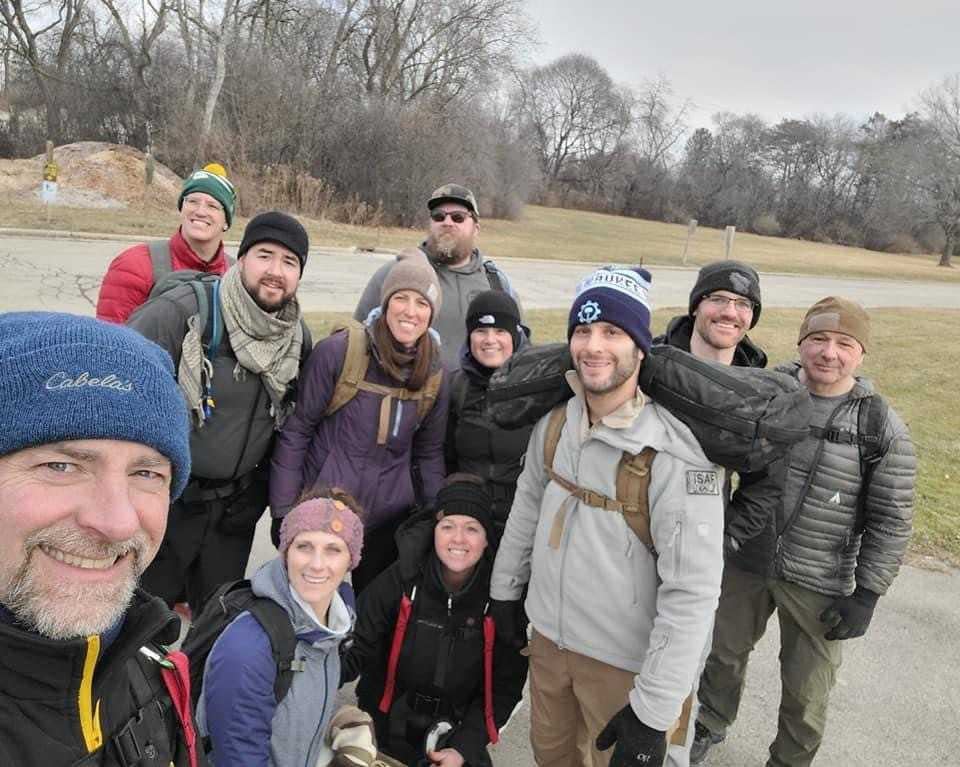
How do I join a rucking club in Milwaukee?
GoRuck, a rucking apparel and supply company and athlete community, oversees more than 500 rucking clubs across the country. One of those is the Good Land Ruck Club in Milwaukee.
Michael Einstein, a veteran, is one of multiple club leaders. He said the group is made up of a diverse range of ages and body sizes and has both veterans and non-veterans. The Good Land Ruck Club has about 30 core members, many of whom met through GoRuck events, which occur regularly all over the U.S.
The club meets for regular Tuesday night rucks and workouts, which are posted in the club Facebook group and on the GoRuck Sandlot app, Einstein said. Past events include a "beer ruck," "taco ruck," sandbag workouts and hot yoga meetups.
The group even organized a "watermelon ruck," where each member had to carry a whole watermelon for at least three miles, said Danny Clayton Veseth, another group leader.
"It's just a group that comes together and wants to understand what it's like to embrace the suck (and) learn to enjoy hard things," Einstein said. "The fact that it's hard, that's how you grow."
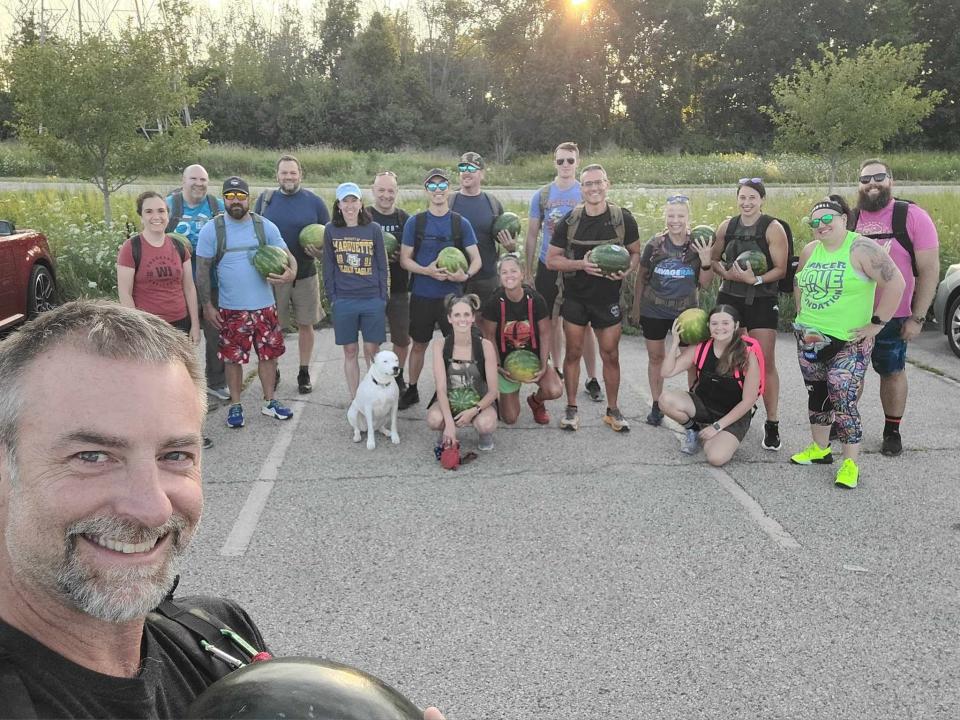
Rucking can teach participants 'invaluable life lessons'
Most Good Land Ruck Club rucks are three-to-five miles and about an hour long. Participants can decide how much weight, if any, they want to carry. However, in addition to regular workouts, some group members have participated in and organized multi-hour, ultra-endurance events.
On Nov. 11, many members will take part in the CHAD 1000X, where they'll complete 1,000 "step-ups" while wearing their rucksacks to raise awareness for veteran suicide prevention.
Some ruckers also regularly participate in "basics," "toughs" and "heavies." These rucks are six hours, 12 hours and 24 hours long, respectively. In each, athletes under 150 pounds carry 20 pounds in their rucksack, and those over 150 pounds carry 30 pounds. However, after adding water, snacks, a jacket and other equipment, Veseth said his load usually ends up totaling more like 40 pounds.
Through these tough workouts, Einstein said he's learned invaluable lessons.
"In that hardship, I find peace," he said. "It's crazy what you can find out about yourself. … It makes me a better father, a better husband. It makes me a better colleague. It makes me better at everything because everything is so easy in comparison."
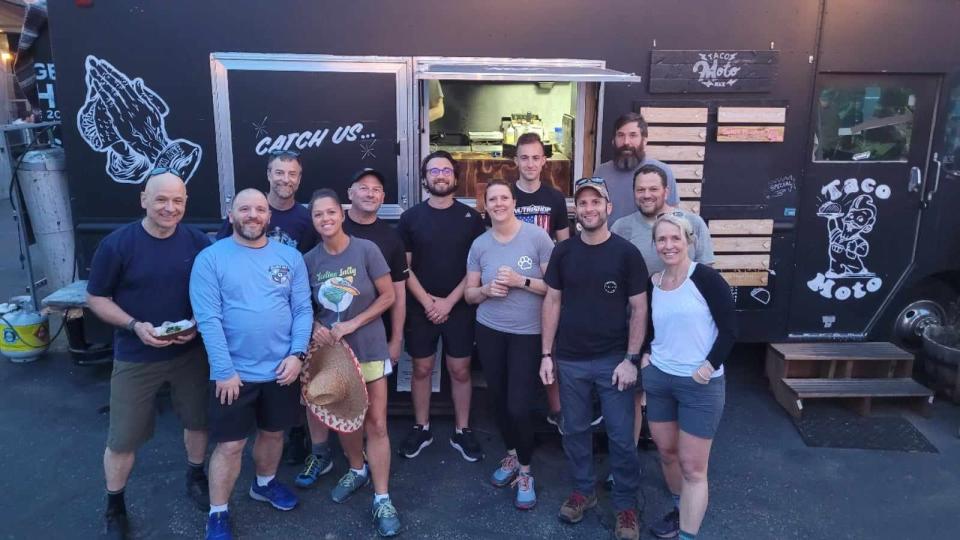
Does rucking really build muscle?
Any walking over a long period of time can build cardiovascular endurance, but rucking is a low impact way to increase strength and bone density, Earl-Boehm told the New York Times.
Additionally, spending time outdoors rucking ― or doing many other physical activities ― has been shown to improve cognitive function, brain activity, blood pressure, mental health and sleep.
Toni Christiansen Gillette has been a member of the Good Land Ruck Club since 2019 and is now a group leader. The strength she's developed from rucking, she said, has helped her greatly in her job as a spinal cord injury therapist.
"In my job, I have to do a ton of lifting and a ton of transfers. ... My back was kind of starting to hurt when I was working with patients," she recalled. "Then, I started to notice that I felt stronger, and I could do a better job of managing my patients and doing my job."
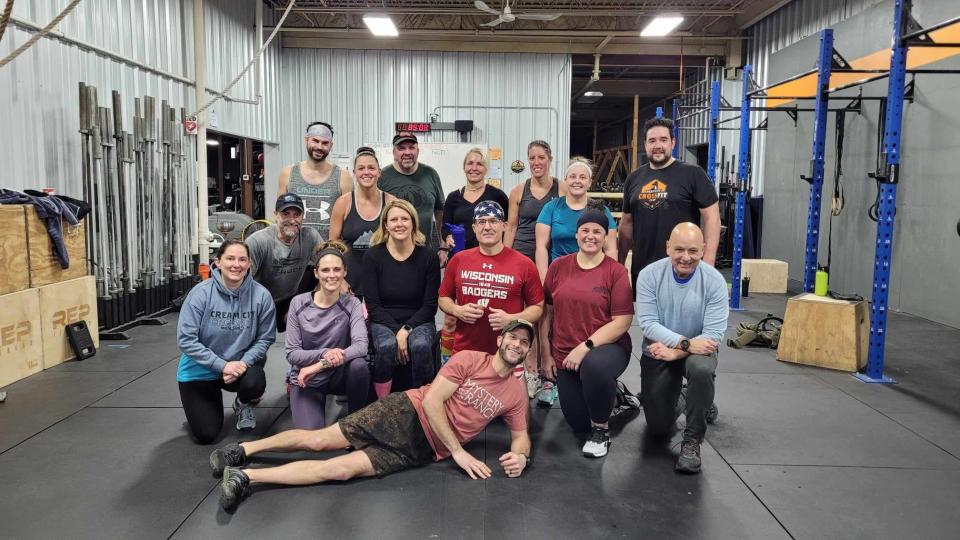
Gillette also enjoys rucking for the community aspect. With GoRuck clubs across the country, even when she and her husband are visiting family in Tennessee, they can still find likeminded people to workout with.
"There's a rucking group like 45 minutes from my parents' house, and I reached out a couple years ago, and it was crazy ― they had the same culture, same philosophy," she said. "Ever since then, every time we go down there, we ruck with them."
This article originally appeared on Milwaukee Journal Sentinel: What is rucking? How to participate in new fitness trend in Milwaukee

